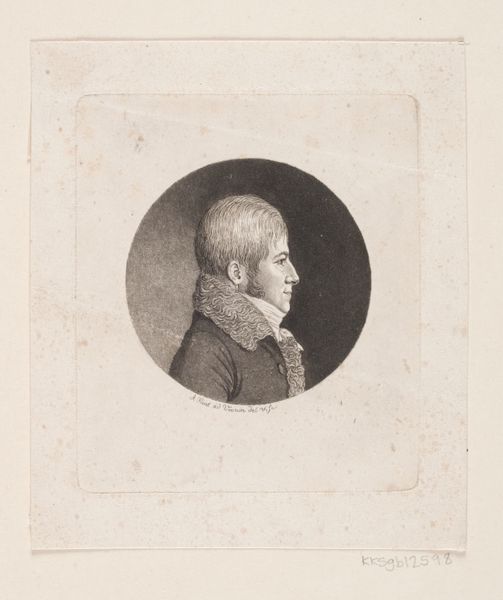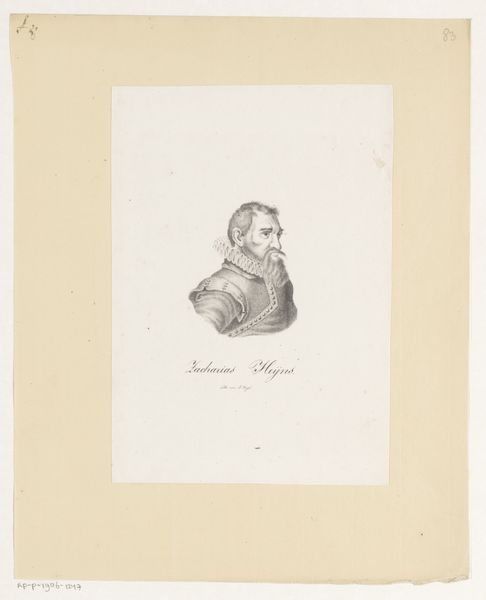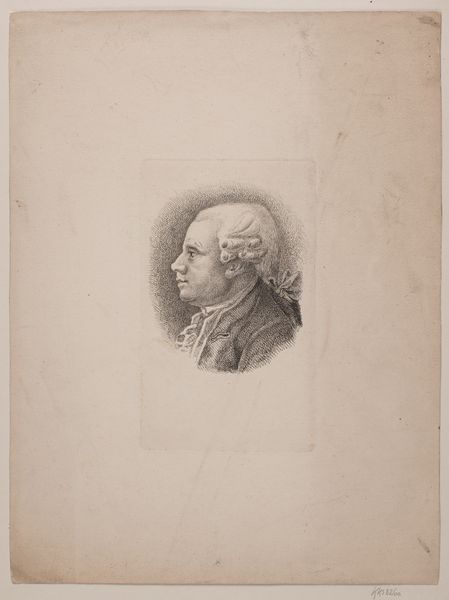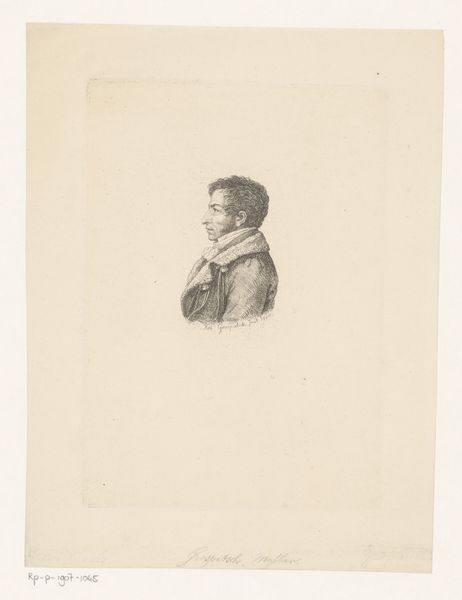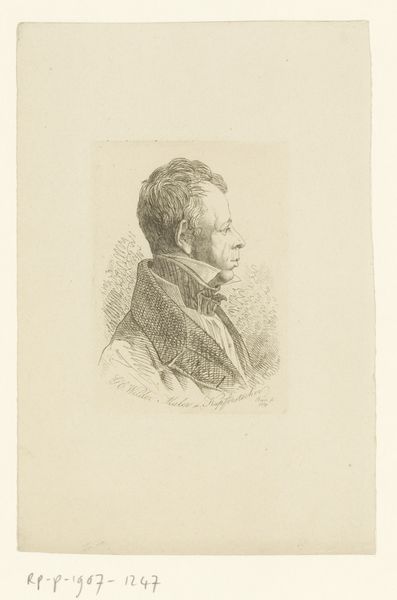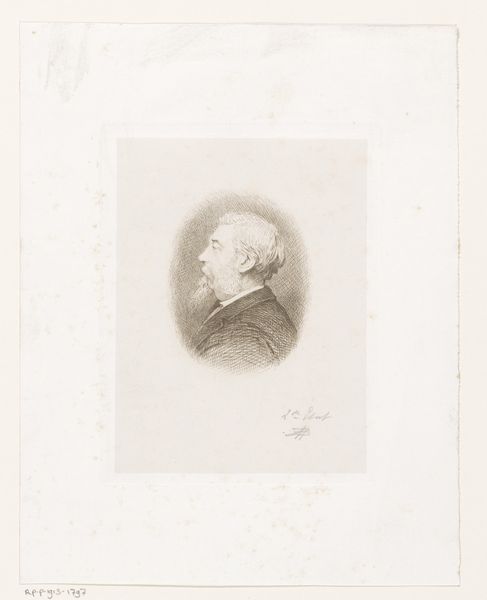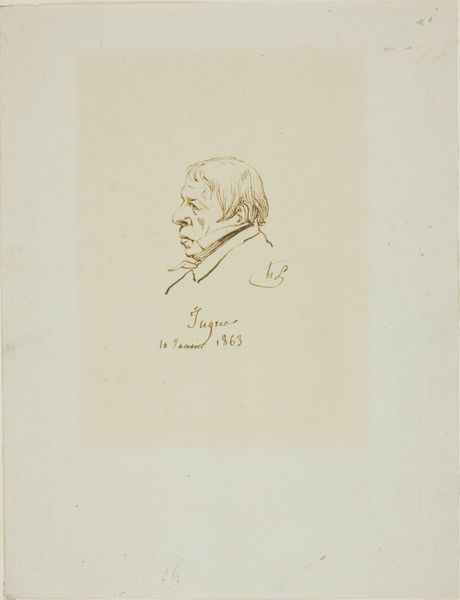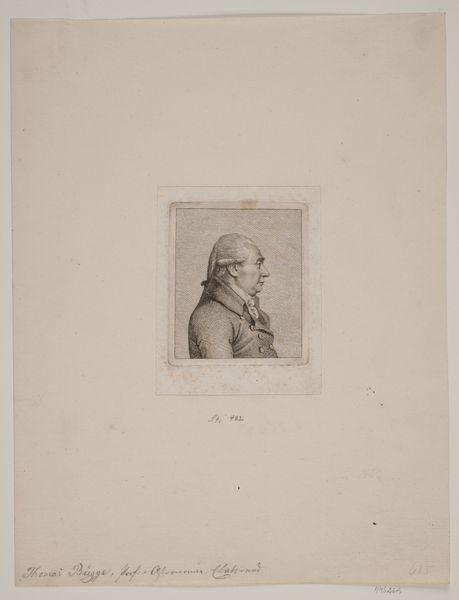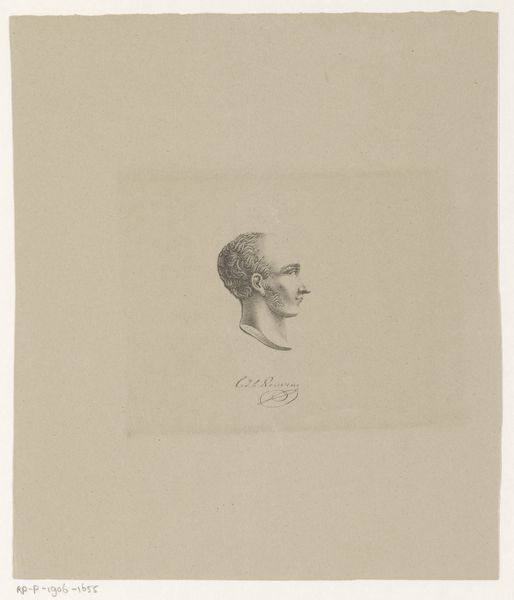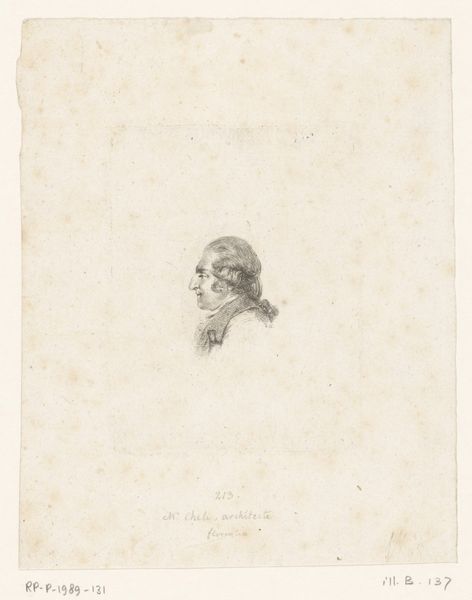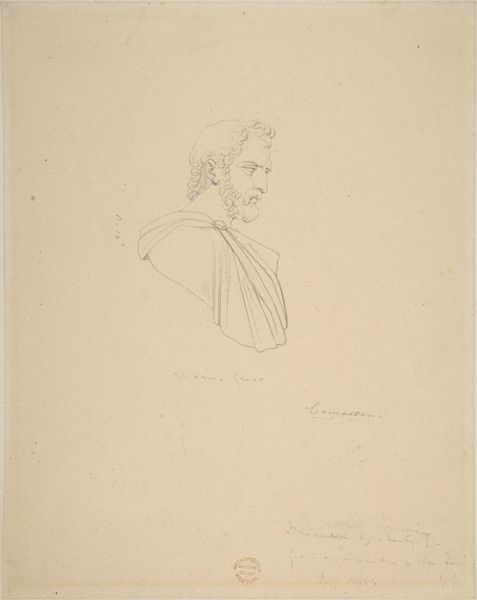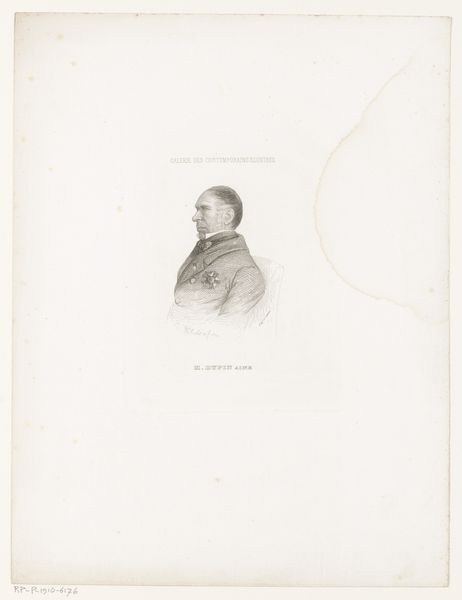
Dimensions: height 137 mm, width 90 mm
Copyright: Rijks Museum: Open Domain
Charles Onghena made this portrait of Theodorus Victor van Berckel using etching, a printmaking technique that uses acid to cut into a metal plate. It's hard to put a firm date on the image, but Onghena lived and worked in the 19th Century, during a period of dramatic upheaval in Dutch society. Looking at the clean lines, we can see how the image creates meaning through visual codes and historical associations. The sitter's powdered wig and formal attire speak to the enduring power of the old merchant classes in the Netherlands, even as their dominance was being challenged by new social forces. Van Berckel is presented as a pillar of the establishment, embodying the values of tradition and order. To fully understand this portrait, we can dive into archives, explore genealogical records, and examine historical accounts. We might ask: how did Van Berckel navigate the changing political landscape of the 19th century? What role did he play in the economic and social life of his community? By placing art within its historical context, we recognize that its meaning is always shaped by the society in which it was created and received.
Comments
No comments
Be the first to comment and join the conversation on the ultimate creative platform.
